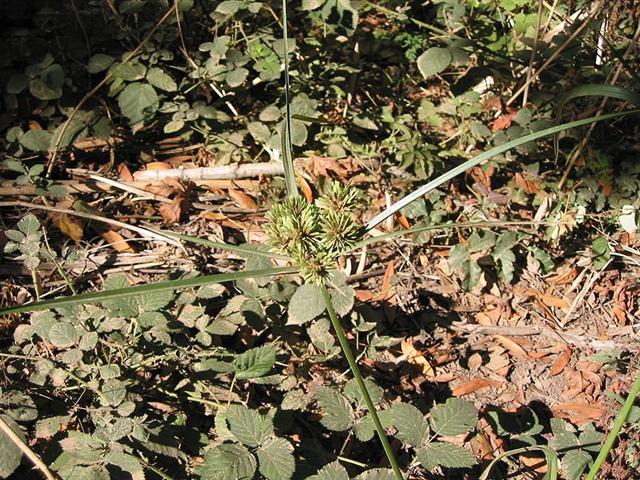|
TRANSLATIONS
Ga7-30 initiates a set of strange 'nodding' glyphs, maybe this is the 'House of Nodding':
If we begin with Ga7-33 and end with Ga8-18, where the lost head becomes a new growth, we will reach 20. We should notice how in G the 'poporo season' starts already at Ga7-15 where in the K text henua ora is inverted (a nut which falls to the ground will in next life be back at the top again):
In Ga7-19--20 we can read the same message as in Kb4-18--19, therefore Ga7-15 presumably is expressing some other nuance of the pito process. If the (strangely) missing glyph in K (*Kb5-1) is a pito place, then maybe Ga7-21 - the 1st of these peculiar signs - could also be such a place. There are 7 = 1 + 6 of them and Ga7-21 is special not only in being first but also by way of other signs:
There are 9 glyphs and the last one has ordinal number 29. The 'person' in Ga7-21 is running (fully alive). There is triplet of honu glyphs with double holes in their 'stomachs' and the first of them, in a pito birth position (1 + 2 = 3), has a 'feathered mauga' at left with 6 + 6 = 12 'feathers'. With these clear sun signs we dare say that in ika hiku in Ga7-27 (Papa O Pea position) the 4 'legs' at left mean the 4 divisions of the 2nd half of the year (which have passed away) and the 3 divisions at right refer to the coming 1st half of the year (in front). Hiku means 'tail fin', but the creature certainly depicts something else. The 'tail of the rat' also tells about the end:
Hau tea in Ga7-28 has no real 'eyes', only 'spooky' ones. In Ga7-24 a great new season is seen dangling in front. Possibly we should read the following set of glyphs (Ga7-30--Ga8-18) as a short description of the year:
The 'House of Nodding' possibly refers to the 4 periods of the 2nd half year, where the curious nuku signs appear together with Rei in the same glyphs. To reach 3 periods for the 1st half year the special 9-glyph long period beginning with the running nuku (Ga7-21) must be added at the front. Counting glyphs:
Once again 32 is suggesting 'fire' (sun). In what I have labelled as the 3rd period, where the 2nd half year maybe is begining, there is a haś glyph (Ga8-5, ordinal number 19) with 16 'feathers' (as if midsummer sun was a kind of full moon). In Ga8-4 (the 18th glyph counted from Ga7-21) the curious nuku suddenly acquires a new 'eye' at bottom right, presumbaly the 'eye' which in the three remaining nuku glyphs has arrived into normal position. The signs say a new great season is beginning in the 3rd period. In Ga8-16 (notice ordinal number 16, number 30 from the beginning) another and new kind of haś appears. The number of 'feathers' is 10 and the 6th especially large. Let us move on. Beginning with Ga8-19 and counting up to and including Gb1-19 we reach 27 (Papa O Pea):
Haś in Ga8-23 has 5 + 9 = 14 'feathers', certainly - among other possible allusions - a sign of ordinal number 5 at Ga8-23 and 9 glyphs further on the solstice pito (Gb1-6). Haś in Gb1-1 has ordinal number 9 (which may be alluded to in the 9 'feathers' at right in Ga8-23) and 4 + 4 'feathers, together with a sign of fertility at right. The 'head' going down at left is rising again at right. In Gb1-2--3 the headless state is illustrated. In Gb1-3 a great 'hole' in the 'stomach' possibly is the new 'nut' which later appears at bottom in Gb1-9, Gb1-11, Gb1-14 and Gb1-19. We have reached and passed the mark between the two great seasons:
Considering the two upside down haati glyphs (Gb1-16--17), and guessing them to illustrate some kind of 'legs', the 2nd half of the year maybe is referred to. As they are upside down (and have no straight cut off sign), their meaning ought to be the opposite of the cut off leg in Aa1-15:
This is the only indication we have observed so far that the glyphs beyond the end of the parallel K text refer to the 'full moon' at midsummer rather than the 'black moon' at midwinter. |
||||||||||||||||||||||||||||||||||||||||||||||||||||||||||||||||||||||||||||||||||||||||||||||||||||||||||||||||||||||||||||||||||||||||||||||||||||||||||||||||||||||||||||||||||||||||||||||||||||||||||||||||||||||||||||||||||||||||||||||||||||||||||||||||||||||||||||||||||||||||||||||||||















































